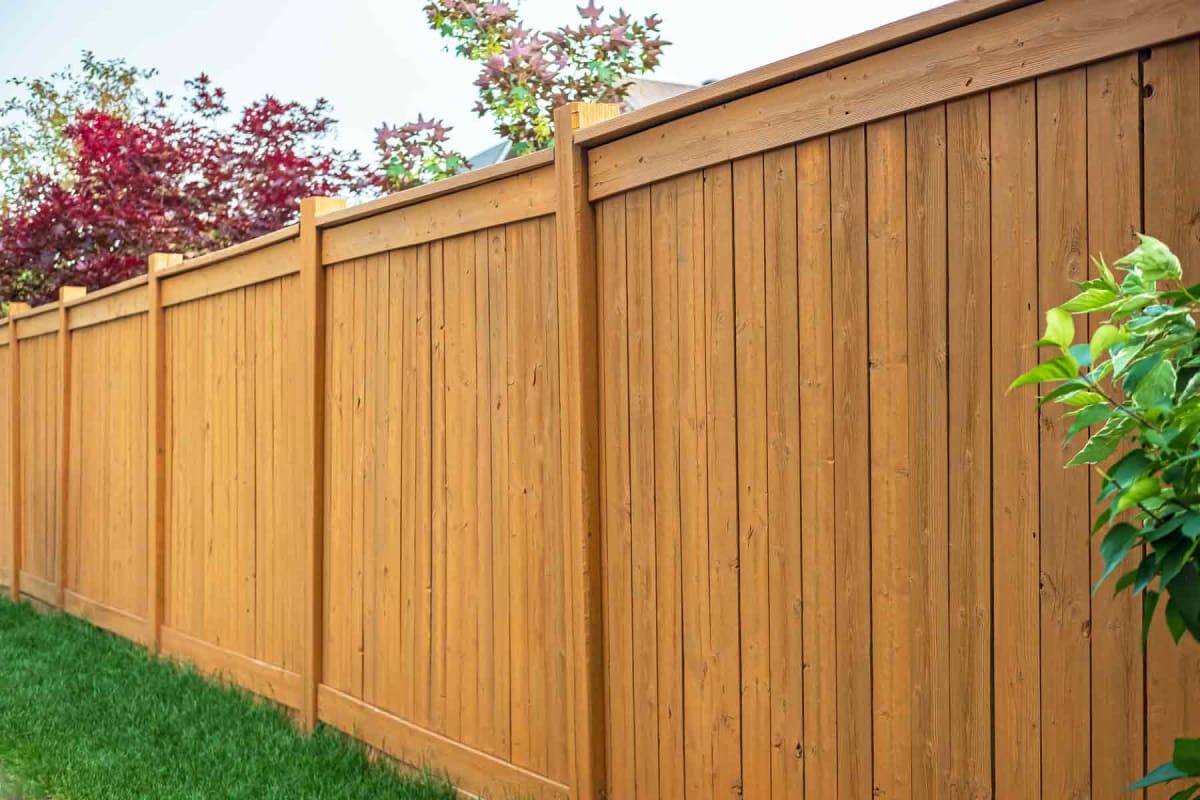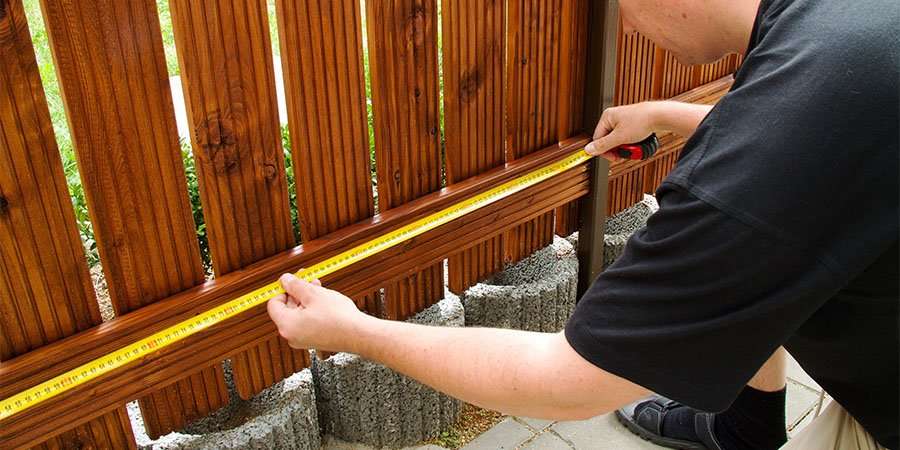All Categories
Featured
Preserving your fencing is important to ensure its functionality, durability, and look. Various products have distinct maintenance demands, influenced by variables such as environment, direct exposure to elements, and intended use. Whether your fencing is made from wood, vinyl, steel, or other materials, understanding its treatment demands will help keep it in ideal problem. Here's an introduction of exactly how to keep different kinds of fence products efficiently.
![]()
Cleansing: Use a pressure washer or soapy water with a soft brush to get rid of mildew, dust, and algae. This must be done yearly or biannually. Discoloring and Sealing: Apply a sealer or tarnish every 2-- 3 years to avoid dampness damages and UV fading. Pick a top notch item suitable for outdoor use. Fixings: Change distorted, decomposed, or fractured boards asap to avoid further damages. Parasite Management: Treat with a timber preservative to shield against termites and various other parasites. 2. Plastic Fences. Plastic fences are popular for their low-maintenance nature but still call for some upkeep.
Cleaning: Clean the fence with a mix of water and light detergent utilizing a soft sponge or towel. Avoid rough cleansers that may damage the surface. Inspections: Look for voids or fractures occasionally, particularly after tornados. Vinyl can end up being breakable in very chilly weather condition. Stopping Discoloration: Remove spots immediately. For hard spots, make use of a vinegar solution or a vinyl-safe cleaner. 3. Chain-Link Fences. Chain-link fencings are functional and durable, typically used for safety and boundary noting.
Rust Removal: Inspect for rust routinely, specifically in coastal or damp areas. Remove rust with a wire brush and apply a rust-proof coating. Cleaning: Rinse with water to eliminate dust and particles. Utilize a scrub brush for areas with heavy buildup. Tightening up and Repairs: Guarantee the links and blog posts continue to be tight. Replace harmed areas or equipment as needed. 4. Wrought Iron Fences. Wrought iron uses a stylish look yet calls for consistent focus to avoid corrosion and preserve its surface.
Corrosion Avoidance: Sand off any type of rust places and use a rust-resistant primer and paint. This need to be done every year or as required. Cleaning: Use a moderate soap option and a soft fabric or sponge to remove dust. Stay clear of rough chemicals that can damage the steel. Painting: Reapply paint every few years to shield the iron and boost its appearance. 5. Aluminum Fences. Light weight aluminum fencings are lightweight, corrosion-resistant, and need very little care.
![]()
Cleansing: Usage soapy water and a cloth to cleanse the fence, rinsing completely to prevent streaks. Examinations: Check for loosened screws or panels occasionally. Protect or replace components if needed. Touch-Ups: Use paint made for aluminum to cover any scratches or chips, protecting the metal beneath. 6. Compound Fences. Composite fence is constructed from recycled materials, combining the look of wood with higher resilience.
Cleansing: Wash with water and make use of a light detergent to eliminate dirt and spots. Prevent abrasive tools that could harm the composite surface. Inspections: Seek indications of bending or breaking, specifically in areas with extreme temperature level adjustments. Form Prevention: Clean mold or mildew quickly with a blend of water and white vinegar. 7. Bamboo Fences. Bamboo fencing is environmentally friendly but much more fragile than other products.
Cleaning: Make use of a soft brush with soapy water to clean dust and particles. Avoid using extreme water pressure to stop splitting. Securing: Use a waterproof sealer every 2-- 3 years to shield against weather damages. Repairs: Replace broken or broken bamboo posts as needed to preserve the structure and look. General Upkeep Tips. Trim Plant Life: Keep vines and shrubs far from the fence to avoid wetness build-up and damages. Seasonal Treatment: In winter season, clear snow build-up from fences to stay clear of anxiety on the framework. In summer, look for sunlight damage or fading. Routine Assessments: Stroll along the fence line regularly to examine for loosened equipment, leaning sections, or other indications of wear. Verdict. Despite the kind of secure fencing material, routine upkeep is the vital to maintaining its function and aesthetic appeals. Wood fencings demand the most upkeep, while vinyl and light weight aluminum call for much less initiative however still gain from regular cleaning and examinations. By resolving small problems early and executing routine treatment, you'll take pleasure in a fence that remains tough and appealing for many years ahead.

- Wood Fences. Wood fencings are classic yet call for regular care to safeguard versus climate and pests.
Cleansing: Use a pressure washer or soapy water with a soft brush to get rid of mildew, dust, and algae. This must be done yearly or biannually. Discoloring and Sealing: Apply a sealer or tarnish every 2-- 3 years to avoid dampness damages and UV fading. Pick a top notch item suitable for outdoor use. Fixings: Change distorted, decomposed, or fractured boards asap to avoid further damages. Parasite Management: Treat with a timber preservative to shield against termites and various other parasites. 2. Plastic Fences. Plastic fences are popular for their low-maintenance nature but still call for some upkeep.
Cleaning: Clean the fence with a mix of water and light detergent utilizing a soft sponge or towel. Avoid rough cleansers that may damage the surface. Inspections: Look for voids or fractures occasionally, particularly after tornados. Vinyl can end up being breakable in very chilly weather condition. Stopping Discoloration: Remove spots immediately. For hard spots, make use of a vinegar solution or a vinyl-safe cleaner. 3. Chain-Link Fences. Chain-link fencings are functional and durable, typically used for safety and boundary noting.
Rust Removal: Inspect for rust routinely, specifically in coastal or damp areas. Remove rust with a wire brush and apply a rust-proof coating. Cleaning: Rinse with water to eliminate dust and particles. Utilize a scrub brush for areas with heavy buildup. Tightening up and Repairs: Guarantee the links and blog posts continue to be tight. Replace harmed areas or equipment as needed. 4. Wrought Iron Fences. Wrought iron uses a stylish look yet calls for consistent focus to avoid corrosion and preserve its surface.
Corrosion Avoidance: Sand off any type of rust places and use a rust-resistant primer and paint. This need to be done every year or as required. Cleaning: Use a moderate soap option and a soft fabric or sponge to remove dust. Stay clear of rough chemicals that can damage the steel. Painting: Reapply paint every few years to shield the iron and boost its appearance. 5. Aluminum Fences. Light weight aluminum fencings are lightweight, corrosion-resistant, and need very little care.

Cleansing: Usage soapy water and a cloth to cleanse the fence, rinsing completely to prevent streaks. Examinations: Check for loosened screws or panels occasionally. Protect or replace components if needed. Touch-Ups: Use paint made for aluminum to cover any scratches or chips, protecting the metal beneath. 6. Compound Fences. Composite fence is constructed from recycled materials, combining the look of wood with higher resilience.
Cleansing: Wash with water and make use of a light detergent to eliminate dirt and spots. Prevent abrasive tools that could harm the composite surface. Inspections: Seek indications of bending or breaking, specifically in areas with extreme temperature level adjustments. Form Prevention: Clean mold or mildew quickly with a blend of water and white vinegar. 7. Bamboo Fences. Bamboo fencing is environmentally friendly but much more fragile than other products.
Cleaning: Make use of a soft brush with soapy water to clean dust and particles. Avoid using extreme water pressure to stop splitting. Securing: Use a waterproof sealer every 2-- 3 years to shield against weather damages. Repairs: Replace broken or broken bamboo posts as needed to preserve the structure and look. General Upkeep Tips. Trim Plant Life: Keep vines and shrubs far from the fence to avoid wetness build-up and damages. Seasonal Treatment: In winter season, clear snow build-up from fences to stay clear of anxiety on the framework. In summer, look for sunlight damage or fading. Routine Assessments: Stroll along the fence line regularly to examine for loosened equipment, leaning sections, or other indications of wear. Verdict. Despite the kind of secure fencing material, routine upkeep is the vital to maintaining its function and aesthetic appeals. Wood fencings demand the most upkeep, while vinyl and light weight aluminum call for much less initiative however still gain from regular cleaning and examinations. By resolving small problems early and executing routine treatment, you'll take pleasure in a fence that remains tough and appealing for many years ahead.
Latest Posts
The Benefits of Routine Vehicle Maintenance at Montclare Auto Repair Saves You Money
Published May 26, 25
1 min read
Choosing the Right Roofing Color: Influence On Power Effectiveness
Published May 24, 25
1 min read
Boost Your Home's Outside with Weathercraft's House siding Solutions
Published May 24, 25
1 min read
More
Latest Posts
The Benefits of Routine Vehicle Maintenance at Montclare Auto Repair Saves You Money
Published May 26, 25
1 min read
Choosing the Right Roofing Color: Influence On Power Effectiveness
Published May 24, 25
1 min read
Boost Your Home's Outside with Weathercraft's House siding Solutions
Published May 24, 25
1 min read